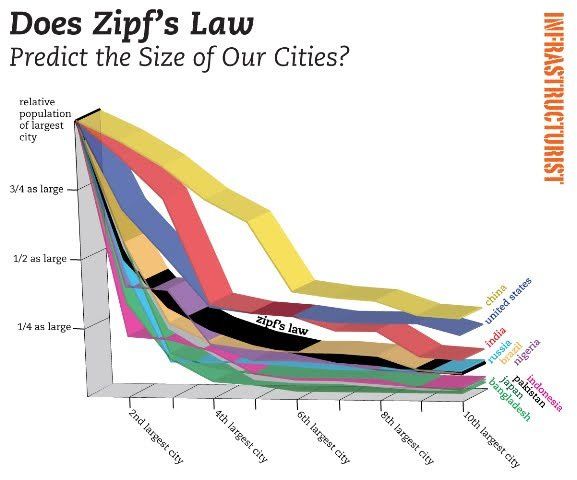Power Law Statistics for Products
A recent column by Steven Strogatz in the New York Times titled " Math and the City " has rekindled interest and debate about the surprising applications of Zipf's Law . Zipf's Law , named for the Harvard Linguist, George Kingsley Zipf , was originally derived as an explanation of the frequency of occurrence of words in the English language. Zipf observed that the most common word ( the ) is used twice as much as the second most common word ( of ), three times as often as the third ( and ), and so on. Interestingly, this pattern holds true for words in all human languages. In mathematical terminology this is called a power-law statistic, and the most surprising thing is that this pattern has been found to hold true for many different natural and social phenomena. For example, seemingly random statistics like cities ranked by population, individuals ranked by wealth, earthquakes by strength, web sites by popularity, books by online sales, all fit the pattern identified by Zipf.
Fascinating. But what's that got to do with product management? Here's the notion: maybe Zipf's Law can also be applied to the relative success of products in the marketplace - for example, how market share is bound to be distributed. The most popular product has twice the share of the next most popular, three times the share of the third, etc. And maybe that's a factor that should be taken into account during product planning. As in, if you already have twice the share of your closest competitor, can you realistically expect to gain any additional share? Or, if you are third in the market, does it constrain where you need to set your goals in terms of realigning the entire market (vs. just thinking about your own revenue growth)?
Another way to think about applying Zipf's Law may be to the allocation of development resources. We know that this is one of the more challenging problems in product development: with a given pool of resources - what is the best way to allocate people and funding across multiple initiatives? Since there is no proven method for optimizing the mix, why not let Zipf show the way? The most important (largest opportunity) should get twice the resources of the second most important, and three times the allocation of the third. Why? Because it's the law.








GET IN TOUCH
Start unleashing the power of your products and platforms today.
MIDIOR is a professional services firm offering consulting, technology and data services that unleash the power of your products and platforms.
info@midior.com
(617) 864-8813
Copyright 2025 © MIDIOR Consulting | Privacy Policy

